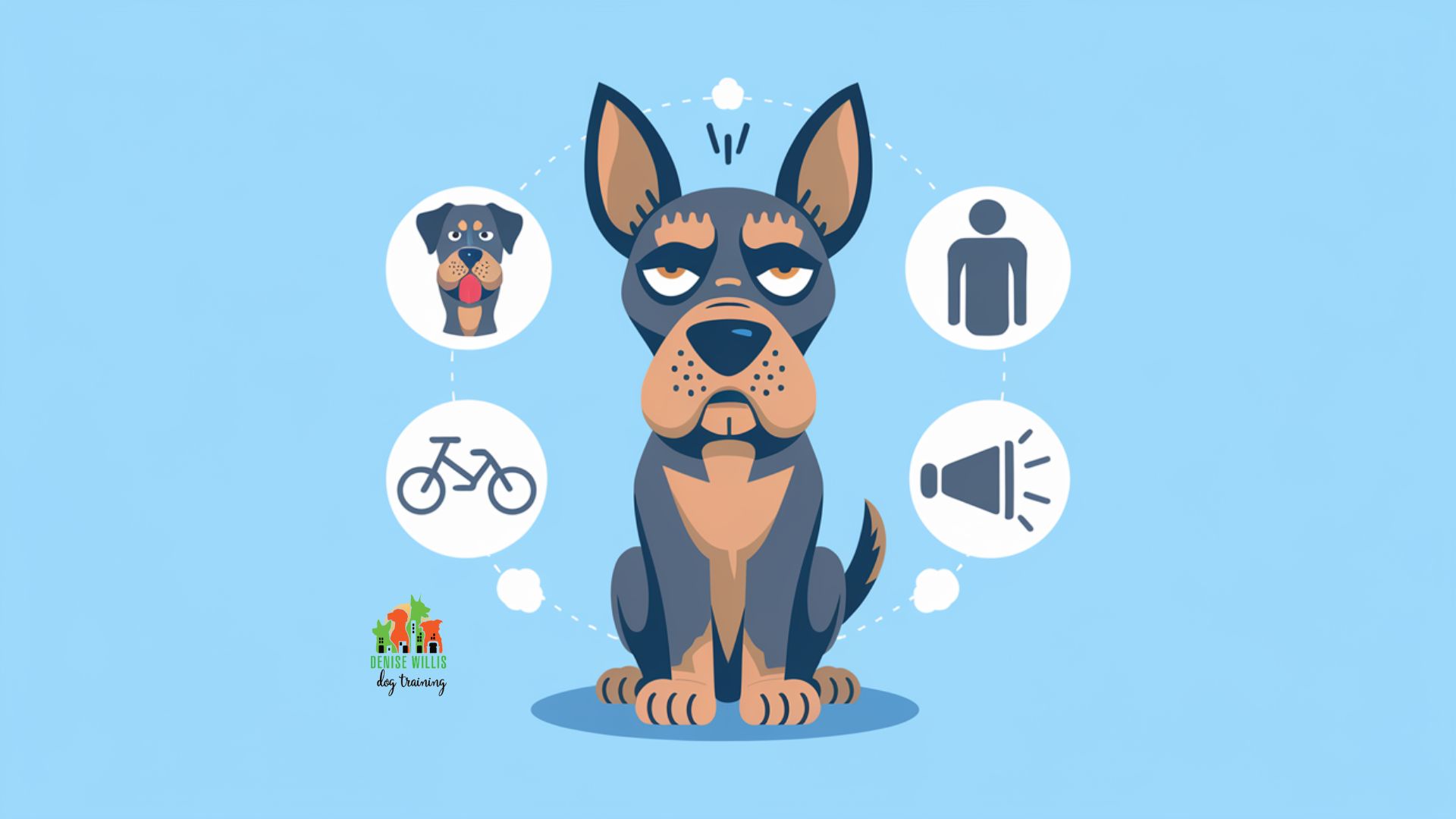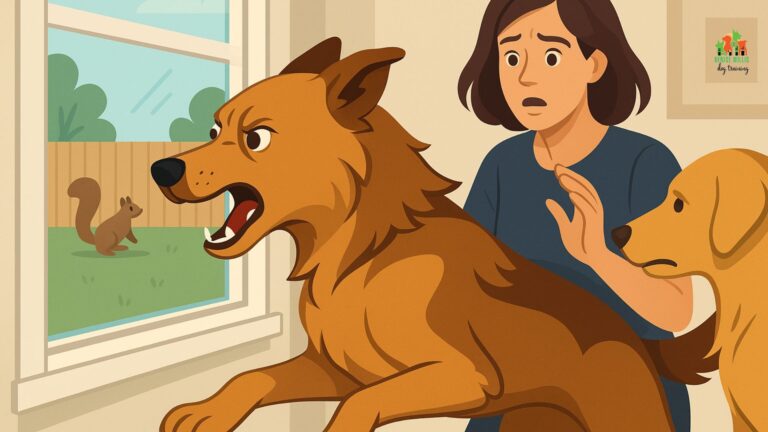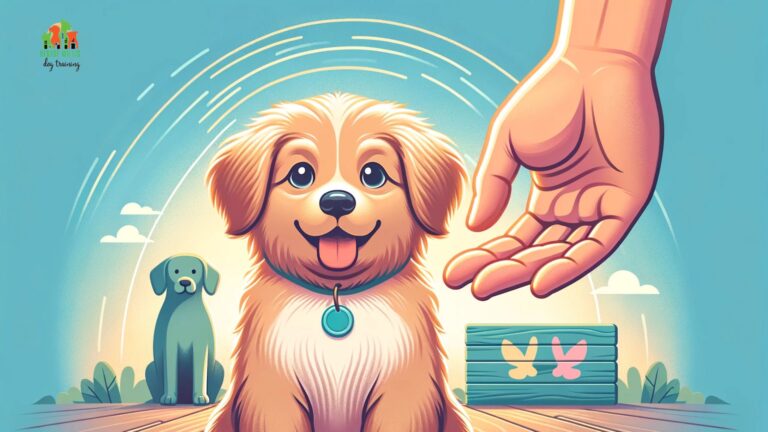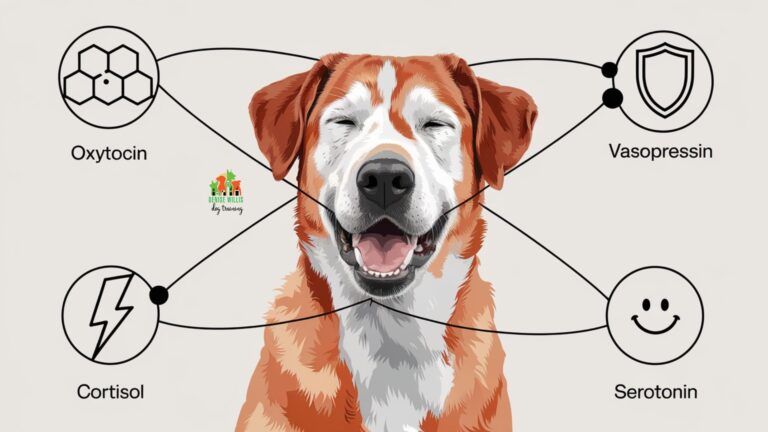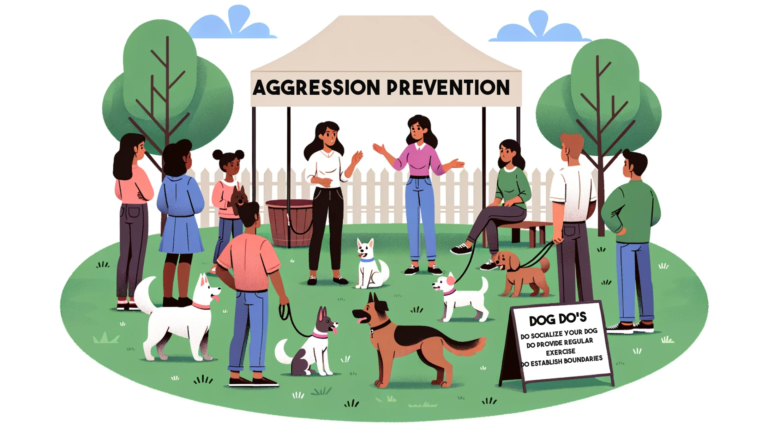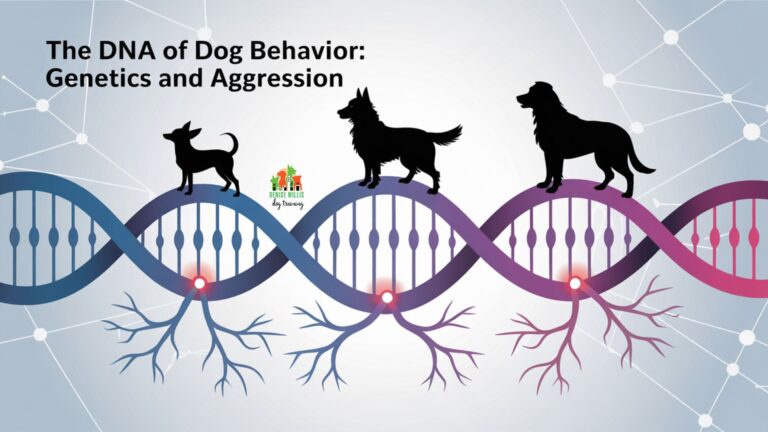Help! My Dog Hates the Mailman: Dealing with Rover-Reactive Dogs
📍 Service Area Notice: DW Dog Training provides in-person training services exclusively in the Greater Baltimore area. While our blog content is designed to help dog owners internationally, our hands-on training services are locally focused. For readers outside our service area, we hope you find value in our articles and welcome you to reach out with questions!
Rover-reactive dogs. If you’re reading this, chances are you’ve got one of these furry firecrackers on your hands. You know the drill – one minute you’re enjoying a peaceful walk, and the next, your pup’s doing their best Cujo impression because the neighbor’s cat dared to exist on the same planet. And don’t even get me started on the mailman. Poor guy probably thinks your address is the canine version of the Thunderdome.
But here’s the thing: your dog isn’t trying to audition for the next horror movie. They’re just… well, reactive. And trust me, as someone who’s been training dogs for longer than some of you have been alive (ouch, did I just age myself?), I’ve seen it all. From the tiniest Chihuahua with dreams of world domination to the gentlest giant who suddenly turns into a furry tornado at the sight of a skateboard.
So, grab your favorite beverage (I won’t judge if it’s wine o’clock), get comfy, and let’s dive into the world of rover-reactive dogs. By the time we’re done, you’ll be armed with strategies to turn your canine chaos machine into a more chill companion.
And who knows? Maybe the mailman will finally be able to deliver your packages without needing a change of pants.
Understanding Rover-Reactive Dogs
Common Triggers
Other dogs, people in uniforms, moving objects, loud noises, and new environments can all trigger reactivity in dogs.
Management Strategies
Professional behavior modification, controlled socialization, obedience training, and environmental management are key strategies.
Reactivity vs Aggression
Reactivity is often rooted in fear or anxiety, while aggression is intended to cause harm. Understanding this difference is crucial for proper training.
Training Tools
Positive reinforcement, muzzle training when necessary, and specialized equipment like head halters can aid in managing reactive behaviors.
Key Takeaways
Before we dive in deeper than a retriever after a tennis ball, let’s fetch the main points:
- Rover-reactive dogs aren’t being jerks; they’re usually scared, anxious, or confused.
- Understanding the root cause of your dog’s reactivity is like finding the right chew toy – it makes everything easier.
- Professional help isn’t admitting defeat; it’s like calling in the Navy SEALs for your dog training mission.
- Controlled socialization is key – think of it as your dog’s version of speed dating, but with less awkward small talk.
- Consistency in training is crucial. It’s not a sprint; it’s a marathon (but with more treats and belly rubs).
- Your dog’s environment plays a big role. Sometimes, being a ninja and avoiding triggers is the best strategy.
- Always rule out medical issues. Your dog might not be grumpy; they might just have a headache (metaphorically speaking).
Understanding Rover-Reactive Dogs
Now, before we dive into the nitty-gritty of why your furry friend turns into a barking machine at the sight of the mailman, let’s get one thing straight: your dog isn’t trying to audition for the role of neighborhood menace.
They’re not plotting world domination (well, most of them aren’t), and they certainly don’t wake up in the morning thinking, “How can I embarrass my human today?”
Nope, it’s much more complicated than that. So, grab your detective hat and maybe a handful of treats, because we’re about to unravel the mystery of what’s going on in that adorable, sometimes chaotic, canine mind of theirs.
What Causes Reactivity in Dogs?
Alright, let’s get into the nitty-gritty of why your precious pooch turns into a furry tornado at the sight of the mailman, other dogs, or that suspiciously placed fire hydrant.
First things first: reactivity isn’t your dog’s way of auditioning for the lead role in “Cujo: The Musical.” It’s usually their way of saying, “Hey, I’m not comfortable with this situation, and I don’t know how else to tell you!”
Here are some common causes:
- Lack of socialization: Imagine if you’d never met another human until you were an adult. Pretty scary, right? Same for dogs who haven’t been properly introduced to the world during their critical socialization period.
- Past trauma: Dogs have long memories, especially for bad experiences. One nasty encounter can lead to a lifetime of “stranger danger” reactions.
- Genetics: Some dogs are just born with a more reactive temperament. It’s like how some people are natural extroverts, and others prefer a quiet night in with Netflix.
- Fear or anxiety: Sometimes, the big scary world is just too much for your furry friend to handle.
- Frustration: Leash reactivity often stems from frustration. Your dog sees something they want to investigate but can’t get to it. Cue the doggy tantrum.
Common Triggers for Rover-Reactive Dogs
Now, let’s talk triggers. These are the things that make your dog go from zero to sixty faster than you can say “drop it.” Common triggers include:
- Other dogs (on or off-leash)
- People (especially those in uniform or with unusual gaits)
- Moving objects (bikes, skateboards, cars)
- Loud noises (thunder, fireworks, construction)
- New environments
- Specific smells (yep, dogs can be reactive to odors too)
Remember, every dog is unique. Your pup might be totally chill around other dogs but lose their mind at the sight of a balloon. It’s all part of their quirky, furry charm.
The Journey of Rover-Reactive Dogs
Development of Reactivity
Rover-reactive behaviors typically emerge during adolescence, between 6 to 18 months of age. However, reactivity can develop at any point in a dog’s life due to factors like lack of socialization, traumatic experiences, or genetic predisposition.
Identifying Reactivity
Owners may notice their dogs showing excessive barking, lunging, or fear responses to specific triggers such as other dogs, people, or environmental stimuli. This is often the point where they begin seeking solutions.
Seeking Professional Help
Many owners enroll in specialized training programs like Reactive Rovers. These programs typically run for about 4 weeks, with sessions twice a week, focusing on foundation skills and gradual exposure to triggers.
Initial Progress
The timeline for improvement varies greatly depending on the individual dog and the consistency of training. Many owners report seeing initial progress within a few weeks to a few months of dedicated work.
Long-Term Management
Managing reactivity is often a long-term commitment. Some dogs require ongoing training and management throughout their lives. The journey can be non-linear, with periods of progress and setbacks.
Significant Improvement
With proper support and consistent training, many reactive dogs show significant improvements over time. However, achieving substantial, lasting changes in behavior may take months or even years of dedicated effort.
The Difference Between Reactivity and Aggression
Here’s a crucial distinction that many pet parents miss: reactivity is not the same as aggression. Let me repeat that for the folks in the back: REACTIVITY IS NOT AGGRESSION.
Reactive behavior is rooted in emotion – usually fear, anxiety, or frustration. It’s your dog’s way of trying to increase distance from the trigger. They’re essentially saying, “Hey, this makes me uncomfortable. Please make it go away!”
Aggression, on the other hand, is meant to do harm. It’s much rarer and usually comes with very different body language.
Here’s a quick comparison:
Reactive Dog:
- Barks and lunges, but doesn’t really want to make contact
- May have their hackles up (raised fur along the back)
- Might alternate between facing the trigger and trying to run away
- Often looks stressed or scared
Aggressive Dog:
- Intends to make contact and cause harm
- Shows teeth, growls deeply
- Body is stiff and forward-oriented
- Eyes are hard and focused
Understanding this difference is crucial.
It helps you approach the problem with empathy and the right training techniques. Your reactive dog isn’t trying to be the neighborhood bully; they’re more like the kid who’s scared of their own shadow and overcompensates by yelling a lot.
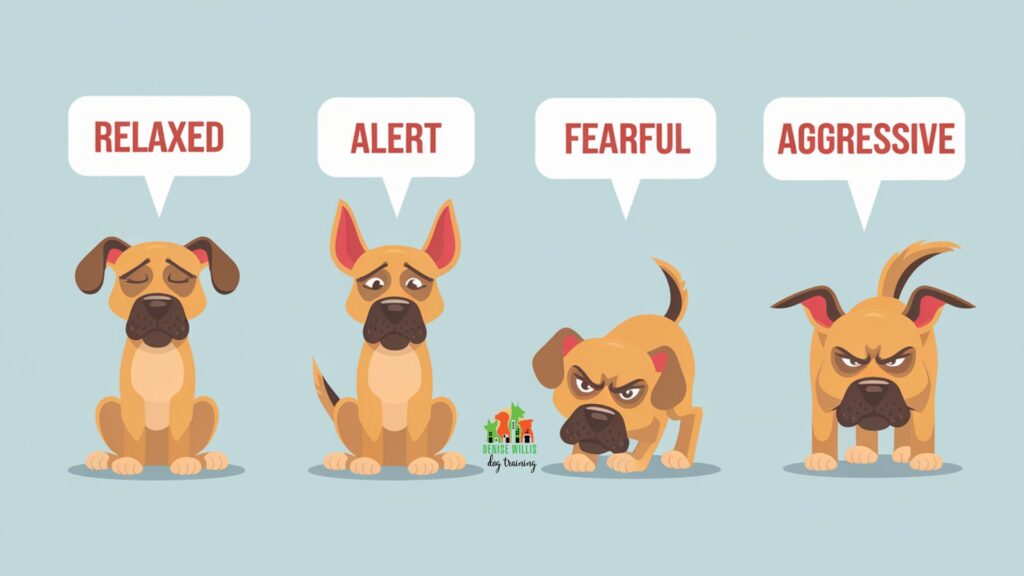
5 Proven Strategies to Manage Rover-Reactive Dogs
Alright, let’s get down to brass tacks (or should I say, brass collars?). Here are five strategies that I’ve seen work wonders over my years of training. Remember, every dog is unique, so you might need to mix and match these approaches to find what works best for your furry friend.
1. Professional Behavior Modification
Look, I know what you’re thinking. “But I can handle this myself!” Maybe you can, but here’s the truth: working with a certified dog behaviorist or trainer is often the fastest and most effective way to address reactivity issues.
Here’s why:
- They can spot triggers that you might miss
- They’ll create a training plan tailored to your dog’s specific needs
- They’ll teach you how to safely manage your dog’s behavior (because let’s face it, nobody wants to be that person at the dog park)
- They provide ongoing support, because Rome wasn’t built in a day, and neither is a well-behaved dog
Remember, seeking help isn’t admitting defeat. It’s being a responsible pet parent who wants the best for their furry friend. Plus, it’s a lot less stressful than trying to figure it all out on your own while your dog turns every walk into a WWE smackdown.
2. Controlled Socialization
Think of this as doggy diplomacy. We’re going to gradually introduce your pup to other dogs in a way that’s safe, controlled, and positive. Here’s how:
- Start with the chillest dogs you can find. We’re talking Zen master level here.
- Use barriers like fences or leashes to keep everyone safe.
- Keep the first meetings short and sweet. Quality over quantity, folks.
- Reward your dog for staying calm. Treats are your secret weapon here.
- Slowly increase the duration and closeness of these interactions.
Remember, patience is key. This isn’t a race, it’s a journey. Let your dog set the pace, and don’t push too hard too fast. We’re aiming for progress, not perfection.
3. Obedience Training and Focus Work
Teaching your dog to focus on you and respond to commands, even when other dogs are around, is like giving them a superpower. It’s all about building that bond and trust between you two. Here’s what you need to do:
- Practice basic obedience commands every single day. Yes, every day.
- Use positive reinforcement. Treats, praise, toys – whatever makes your dog’s tail wag.
- Gradually introduce distractions during training. Start small and work your way up.
- Master the “leave it” command. It’s a lifesaver in tense situations.
- Work on recall in different environments. Your backyard, the park, the moon – okay, maybe not the moon.
Consistency is key here. The more reliable your dog’s obedience, the easier it’ll be to manage their behavior around other dogs. Plus, it’s a great way to tire them out mentally, which can help reduce overall anxiety and reactivity.
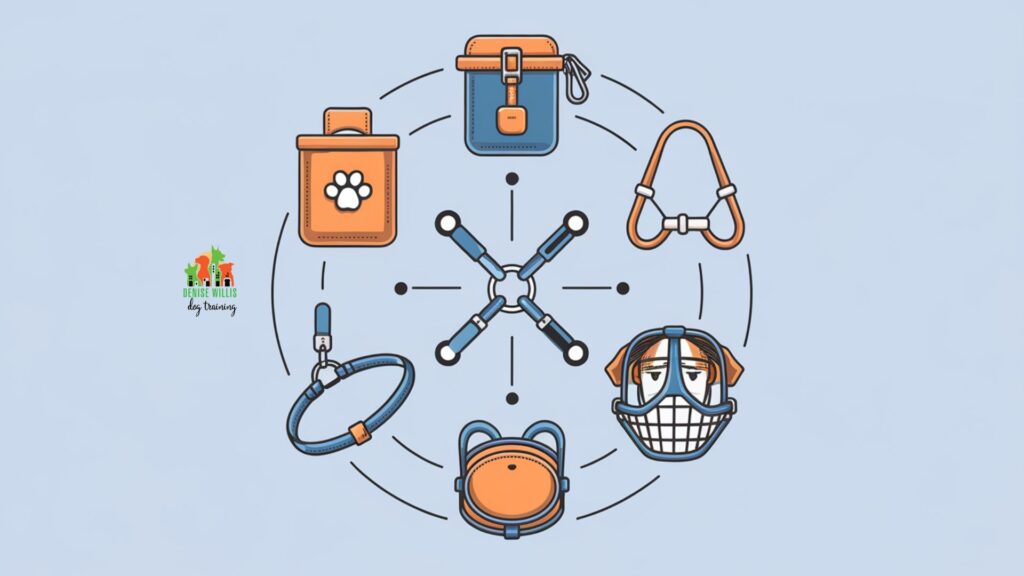
4. Environmental Management
Sometimes, the best offense is a good defense. Managing your dog’s environment can prevent reactive outbursts before they happen. Here’s how to be an environmental ninja:
- Choose quieter walking routes. Rush hour at the dog park? Maybe not.
- Exercise your dog during off-peak hours. Early bird gets the worm and avoids the crowd.
- Use a muzzle when necessary. It’s not cruel if it keeps everyone safe.
- Create a safe space at home where your dog can retreat. Think of it as their personal chill-out zone.
Remember, management is often a temporary solution while you work on long-term behavior modification. It’s not about avoiding the problem forever, but about setting your dog up for success while they learn.
5. Medical Evaluation
Sometimes, reactivity isn’t just a behavioral issue – it can be a sign that something’s not right physically. That’s why a trip to the vet should be on your to-do list. Here’s what to do:
- Schedule a thorough check-up. Leave no stone unturned.
- Discuss any changes in behavior with your vet. Even small changes can be significant.
- Consider blood tests to rule out hormonal imbalances. Sometimes it’s all about chemistry.
- Explore potential pain-related causes of reactivity. A grumpy dog might just be a hurting dog.
Addressing any underlying medical issues can sometimes resolve or reduce reactive behavior dramatically. It’s like magic, but with science!
The Numbers Game: Statistics on Dog Reactivity
Now, I know some of you data nerds out there (I see you, and I appreciate you) want some hard facts. So, let’s break down some statistics on dog reactivity:
- Approximately 4.5 million people experience dog bites in the United States each year. That’s more than the population of Los Angeles!
- Children aged 5-9 are at the highest risk of dog attacks. So if you’ve got kids, this isn’t just about your dog – it’s about keeping the whole family safe.
- In a study of 65 reactive dogs:
- 53.8% displayed defensive reactivity (basically, the “please don’t hurt me” kind)
- 30.8% showed offensive reactivity (the “I’m gonna get you first” type)
- 3.1% exhibited predatory reactivity (the “you look like a squirrel” variety)
- Male dogs were involved in 58.5% of reactive incidents in the study. Ladies, you’re not off the hook, but the boys are leading this unfortunate race.
- The median age of dogs at the time of biting was 4 years. So much for the terrible twos!
Here’s a quick visual breakdown:
Types of Dog Reactivity and Gender Distribution
These numbers aren’t meant to scare you. They’re meant to show you that dog reactivity is a common issue, and you’re not alone in dealing with it. But remember, your dog is an individual, not a statistic. These numbers give us insight, but your dog’s specific needs and behaviors are what really matter.
Frequently Asked Questions about Rover-Reactive Dogs
Alright, let’s tackle some of the questions I get asked most often about rover-reactive dogs. Consider this your cheat sheet for impressing your friends at the dog park (once your pup is ready for that, of course).
Q: Can reactivity in dogs be cured completely? A: “Cured” is a strong word. Most dogs can show significant improvement with proper training and management. The goal is to make your dog comfortable and manageable around other dogs, even if they never become the life of the doggy party.
Q: How long does it take to see improvements in my dog’s reactive behavior? A: Ah, the million-dollar question! The timeline varies depending on the dog, the severity of the reactivity, and how consistent you are with training. Some dogs show improvement in a few weeks, while others might take months. Remember, we’re not running a sprint here – it’s a marathon.
Q: Is it safe to use a muzzle on my reactive dog? A: When used properly, muzzles can be a safe and effective tool. Think of it like a seatbelt for your dog – it’s not about punishment, it’s about safety. But it’s important to introduce the muzzle properly and use it as part of a broader training program, not as a quick fix.
Q: Can neutering or spaying help reduce reactivity in dogs? A: It can, especially for male dogs with hormone-driven reactivity. But it’s not a guaranteed solution. It’s like taking away the matches from a pyromaniac – it might help, but you still need to address the underlying desire to start fires.
Q: Are certain breeds more prone to reactivity? A: While some breeds might have a higher tendency towards reactivity, individual personality, upbringing, and experiences play a much larger role. It’s like how not every teenager with a skateboard is a delinquent – stereotypes only get you so far.
The Toolbox: Recommended Products for Managing Rover-Reactive Dogs
Now, I’m not one for quick fixes or miracle cures, but there are some products out there that can be genuinely helpful when you’re working on your dog’s reactivity. Think of these as tools in your training toolbox – they’re not solutions on their own, but they can support your overall efforts:
- ThunderShirt Classic Dog Anxiety Jacket: This pressure wrap can help calm anxious or reactive dogs. It’s like a constant hug for your pup.
- PetSafe Gentle Leader Head Collar: This gives you better control during walks, which can help reduce reactivity. It’s like power steering for your dog.
- KONG Classic Dog Toy: Great for redirecting attention and providing mental stimulation. A busy dog is usually a happier, less reactive dog.
- Pet Corrector Spray: This can help create boundaries and manage territorial behavior. It’s like an invisible fence, but less shocking (pun intended).
- Zesty Paws Calming Bites for Dogs: These natural supplements may help reduce anxiety-driven reactivity. Think of it as doggy chill pills.
Remember, while these products can be helpful, they should be used in conjunction with proper training and under the guidance of a professional. They’re not magic wands, but they can certainly make your job easier.
Further Reading: Dive Deeper into Rover-Reactive Dog Behavior
If you’re anything like me, you probably want to learn everything you can about your dog’s behavior. Knowledge is power, after all! Here are some other articles from our site that dive deeper into specific aspects of dog reactivity:
- Socializing Your Fearful Dog: This article provides strategies for helping fearful dogs become more comfortable in social situations, which is crucial for managing reactivity.
- 10 Warning Signs Your Dog Might Bite and How to Prevent It: Understanding the signs of potential aggression can help you prevent reactive incidents before they occur.
- How to Help Your Scaredy Dog: 6 Common Dog Phobias and Their Solutions: Many reactive behaviors stem from fear, so learning how to address common phobias can be incredibly helpful.
- Decoding Your Dog: 15 Body Language Signals You Need to Know: Understanding your dog’s body language is crucial for predicting and preventing reactive episodes.
- Overcoming Your Dog’s Leash Reactivity: This article specifically addresses leash reactivity, a common issue for many rover-reactive dogs.
These articles can help you understand the nuances of dog reactivity in different situations. After all, knowledge is power when it comes to helping our furry friends!
Test Your Knowledge: Rover-Reactive Dogs
Final Thoughts
Alright, let’s wrap this up. If you’ve made it this far, congratulations!
You’re already proving that you’re a dedicated dog parent who’s willing to go the extra mile for your furry friend. That’s half the battle right there.
Here’s what I want you to take away from all this:
- Dog reactivity is common, but it’s not a life sentence.
- Understanding why your dog is reactive is the first step to solving the problem.
- Professional help, controlled socialization, consistent training, environmental management, and medical evaluation are your best tools for addressing reactivity.
- Patience and consistency are key. This isn’t an overnight fix, but the results are worth it.
- You’re not alone in this journey. There are resources, products, and professionals out there to help you every step of the way.
Now, I know we’ve covered a lot here, and you might be feeling a bit overwhelmed. That’s okay! Rome wasn’t built in a day, and your dog won’t become a social butterfly overnight. But every step you take, every training session you have, every positive interaction your dog experiences – it all adds up.
Remember, the goal isn’t to have a “perfect” dog (because let’s face it, even the best dogs have their moments). The goal is to have a dog that you can manage safely, that can coexist peacefully with other dogs, and that can enjoy life without constant stress and fear. And trust me, that goal is absolutely achievable.
So, what’s your next step?
Well, if you’re dealing with dog reactivity and you’re not sure where to start, or if you’ve tried some of these strategies and you’re not seeing the results you hoped for, it might be time to call in the cavalry. That’s where we come in.
At DW Dog Training, we’ve been helping dogs and their humans overcome reactivity issues for decades. We’ve seen it all, from the mildest cases of leash reactivity to full-blown aggressive behaviors.
And you know what? We’ve helped countless dogs turn their behavior around.
Don’t let dog reactivity hold you and your pup back from enjoying life to the fullest. Whether you’re struggling with dog-to-dog reactivity, reactivity toward people, or any other behavioral issue, we’re here to help. Our personalized training plans are designed to address your specific situation and your dog’s unique needs.
We Want to Hear from You!
We’ve covered a lot of ground here, but the conversation doesn’t have to end! Your experiences, questions, and insights are incredibly valuable, not just to us, but to other dog owners who might be facing similar challenges.
So, let’s keep this discussion going!
Share Your Story: Have you dealt with dog reactivity before? What worked for you? What didn’t? Your story could be the beacon of hope that another struggling dog owner needs right now. Drop a comment below and let us know about your journey.
Got Questions? Did this article spark any questions in your mind? Maybe you’re wondering how to apply these strategies to your specific situation, or perhaps you have a unique challenge we didn’t cover. Don’t be shy – ask away! Your question might be exactly what someone else needed to ask but didn’t know how.
What’s Your Take? We’ve shared our proven strategies, but we know there’s always more to learn. What do you think about these approaches? Do you have any additional tips or tricks that have worked wonders for your pup? We’d love to hear your perspective!
Need Clarification? Was there a part of the article that left you scratching your head? Let us know! We’re here to help, and we can always expand on topics that need more explanation.
Success Stories Welcome! If you’ve already implemented some of these strategies and seen positive results, we want to hear about it! Your success story could be the motivation someone else needs to take that first step.
Remember, addressing dog reactivity is a journey, and every journey is unique. By sharing our experiences and knowledge, we create a supportive community that benefits dogs and owners alike. So don’t be a stranger – let’s keep this conversation going!
Leave your comments, questions, or stories below, or reach out to us directly if you prefer. We’re all in this together, and together, we can help create a world of happier, more sociable dogs!
Here’s to wagging tails, happy barks, and peaceful walks in your future. You’ve got this, and we’ve got your back. Let’s make those dog park dreams a reality!

